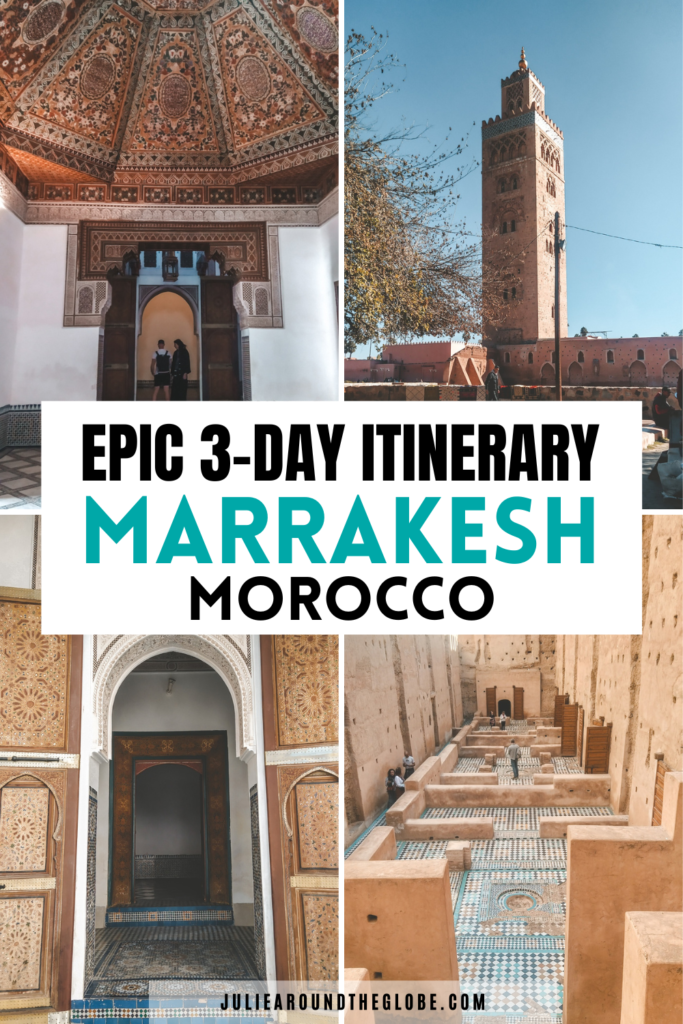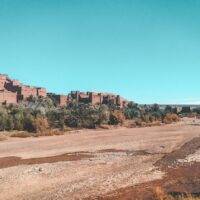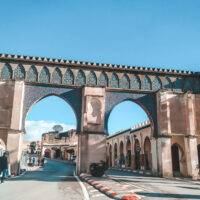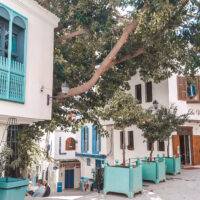3 Days in Marrakesh: An Itinerary for First-Time Visitors
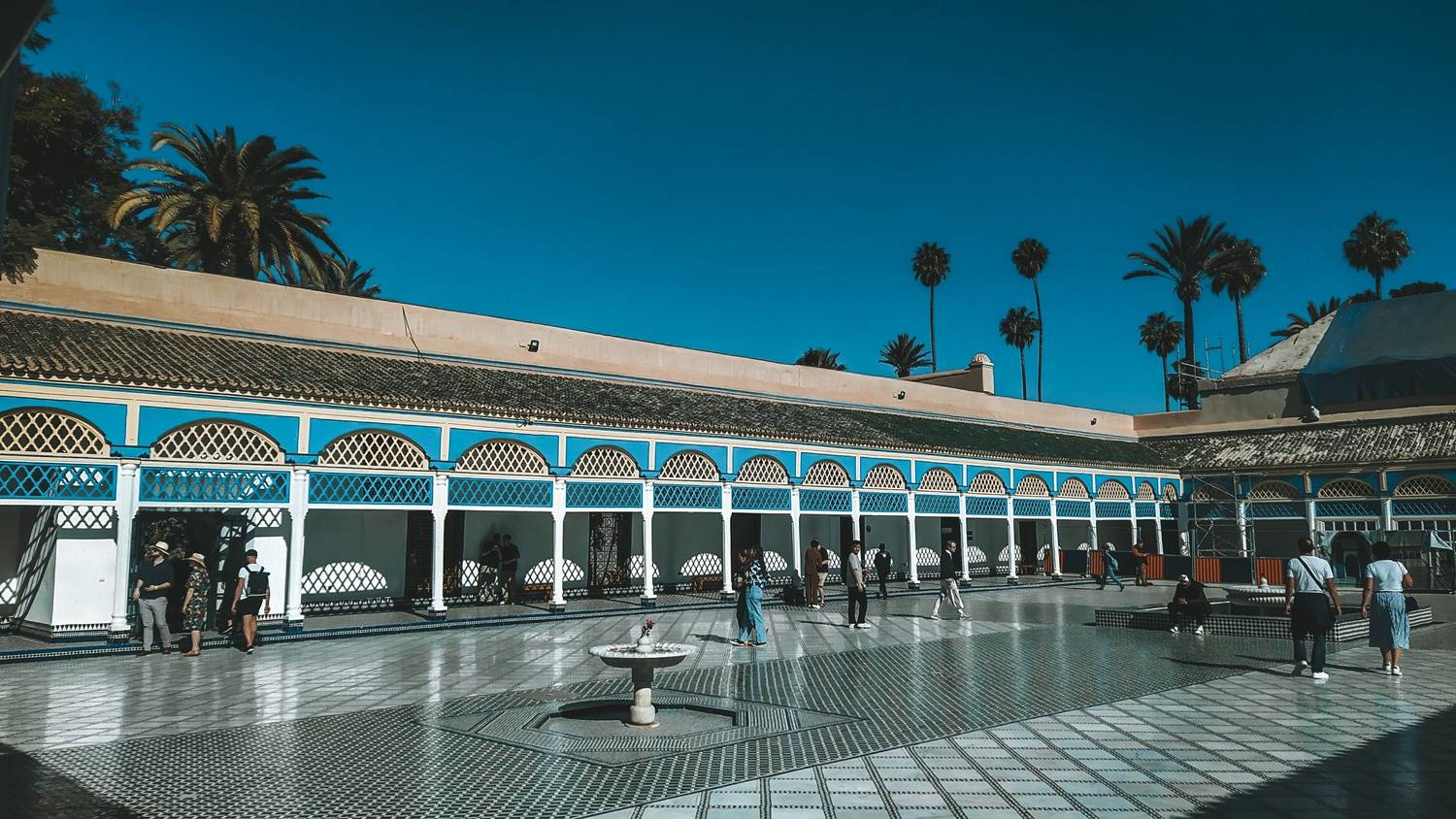
Marrakesh was the place I was most excited to visit in Morocco—and it lived up to the hype. The city is a sensory overload in the best possible way: the scent of spices drifting through the medina, the call to prayer echoing at dusk, vibrant souks that feel like mazes, and tiled palaces tucked behind unassuming walls. It’s the kind of place that overwhelms at first but quickly becomes addictive.
I had three full days in Marrakesh and tried to balance the chaos of the medina with quieter cultural stops, great food, and a bit of adventure. This itinerary is based on what I actually did and loved, with a few adjustments to help you make the most of your time—whether you want to pack in the sights or slow down and savor the experience.
Day 1: The Heart of the Medina
My first day in Marrakesh was all about soaking in the city’s historic core—its palaces, mosques, and markets—all at a pace that let me take it all in without feeling overwhelmed. It was a packed but incredibly rewarding day that gave me a real sense of the city’s rhythm.
Morning: History and Architecture
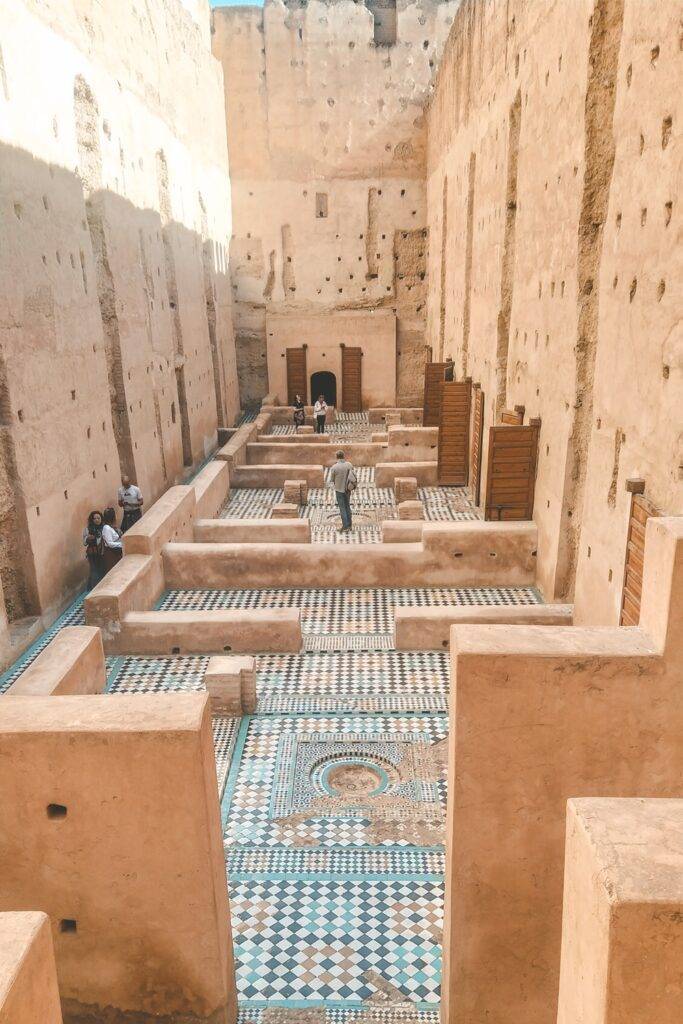

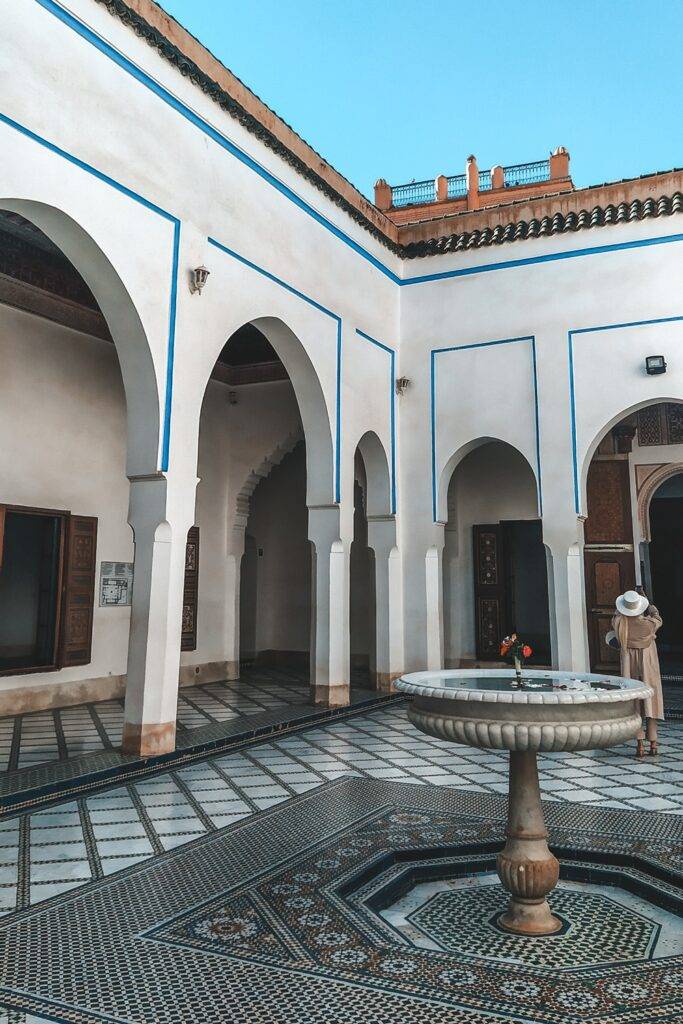
I started early with a visit to the Saadien’s Tombs—a peaceful spot with beautifully decorated mausoleums tucked away near the Kasbah Mosque. It’s one of those places that feels both grand and intimate, with intricately carved marble and colorful zellij tiles.
From there, it was a short walk to the El Badi Palace. The palace is mostly in ruins, but wandering through its massive sunken gardens and open courtyards, with storks nesting on the crumbling walls, it’s easy to imagine the scale of its former glory.
Next, I headed to Bahia Palace, which is better preserved and incredibly ornate. The craftsmanship here is something else—intricately carved wooden ceilings, mosaic floors, and peaceful courtyards filled with orange trees.
Just around the corner is the Dar Si Said Museum, housed in another lovely riad-style palace. It’s smaller and quieter than Bahia, and the exhibits—traditional Moroccan arts, especially woodwork and carpets—are worth a slow wander.
Midday: Medina Walk and Lunch
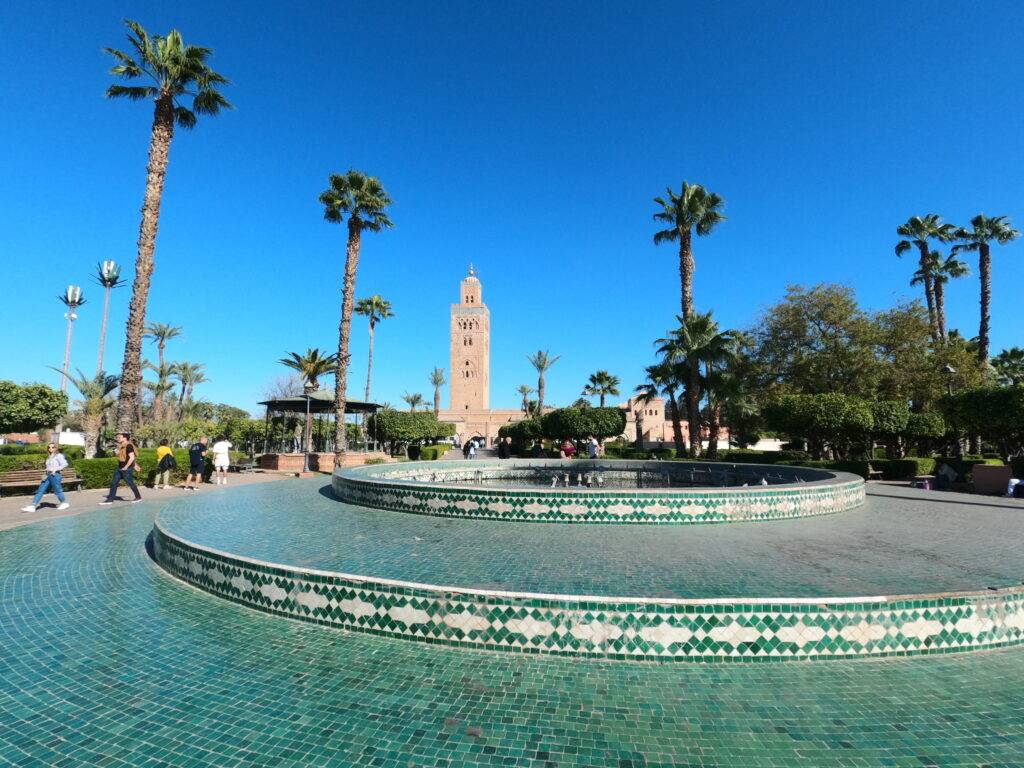
After the palaces, I started making my way toward the souks. On the way, I passed by the Koutoubia Mosque, the largest mosque in Marrakesh, with its iconic minaret visible from almost anywhere in the city. Just behind it lies the famous Jemaa el-Fnaa square, which during the day is more relaxed—mainly juice stalls and scattered vendors, but already buzzing with energy.
I stopped for lunch at Nomad, one of my favorite rooftop spots in the medina. It’s modern but grounded in local flavors—perfect for a laid-back break with great views over the spice market below. The lamb tagine and roasted cauliflower were standouts.
Afternoon: Deeper into the Medina
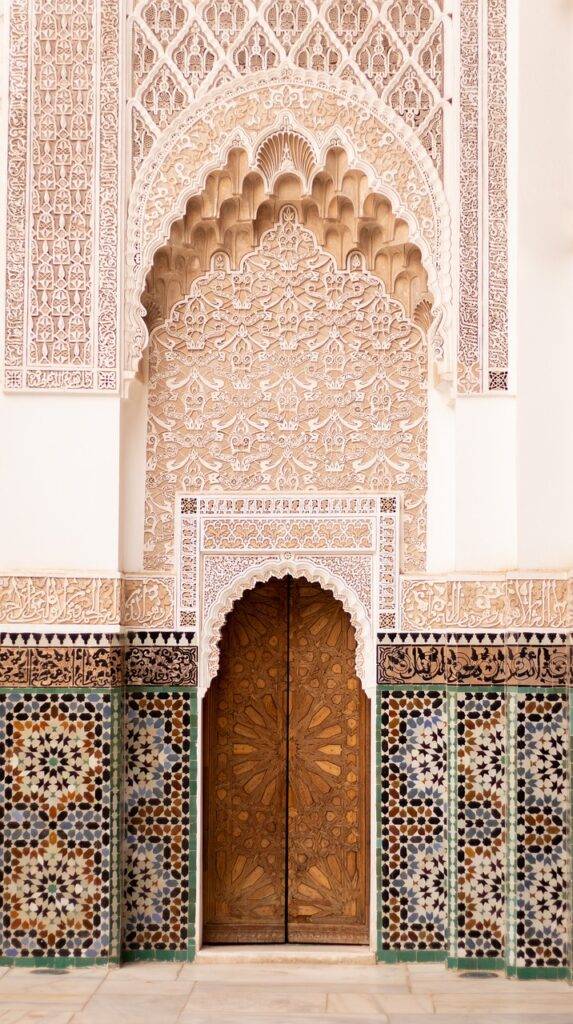

After lunch, I dove into the souks, starting with Souk Semmarine (textiles and leather) and working my way through side alleys filled with everything from spices and woven baskets to leather goods and lanterns. It’s sensory overload in the best possible way.
Some other souks worth strolling by include: Souk el Attarine (spices and perfumes), Souk Chouari (woodworkers and baskets), and Rahba Kedima (the old spice square, great for photos).
Along the way, I visited the Almoravid Koubba, one of Marrakesh’s oldest structures and a fascinating glimpse into 12th-century architecture. Not far from it is the beautifully restored Ben Youssef Madrasa. It was once the largest Islamic school in North Africa, and the courtyard here—with its delicate carvings and intricate symmetry—was one of my favorite photo spots in the city.
Evening: A Street Food Adventure
In the evening, I joined a local street food tour, which took me to places I never would’ve found on my own. We tasted harira soup, tanjia, olives from the market, and fresh msemen pancakes cooked on the spot. Walking through the medina at night with the lanterns lit and the call to prayer echoing—it felt like Marrakesh came even more alive after dark.
Day 2: Gardens, Museums, and a Sunset Adventure in the Agafay Desert
After a packed first day of history and hustle, I wanted something that balanced culture with a bit more calm—and ended in something totally unique. Day 2 in Marrakesh delivered just that, starting with a tranquil garden and ending with a desert sunset that felt worlds away from the medina.
Morning: Jardin Majorelle & Dar El Bacha
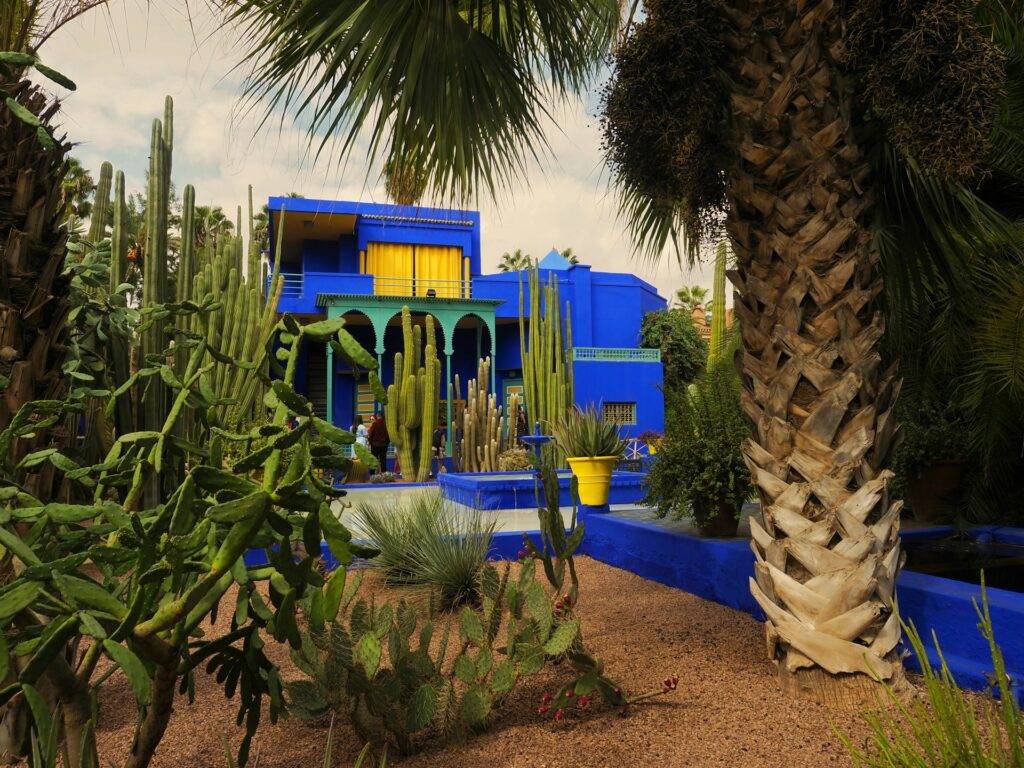
I started the day early with a visit to Jardin Majorelle. It’s one of Marrakesh’s most famous sights, and for good reason. The bold cobalt blue buildings set against bamboo, cacti, and palms are stunning, and the place has this peaceful energy despite its popularity. I got there just after opening, which made a big difference—less crowded, easier to enjoy.
Afterward, I made my way back toward the medina for a visit to the Dar El Bacha Museum, also known as the Museum of Confluences. It’s housed in a gorgeous palace, with rooms dedicated to Moroccan craftsmanship, world religions, and art. The building itself is a work of art, and honestly, it was one of the most beautifully curated museums I visited in Morocco.
Right on site is Bacha Coffee, the perfect place for a mid-morning break. It’s elegant, full of old-world charm, and offers a huge selection of 100% Arabica coffees from around the world. The saffron milk cake and iced coffee were an unexpected highlight of the trip.
Midday: Back to the Medina for Lunch & Wandering
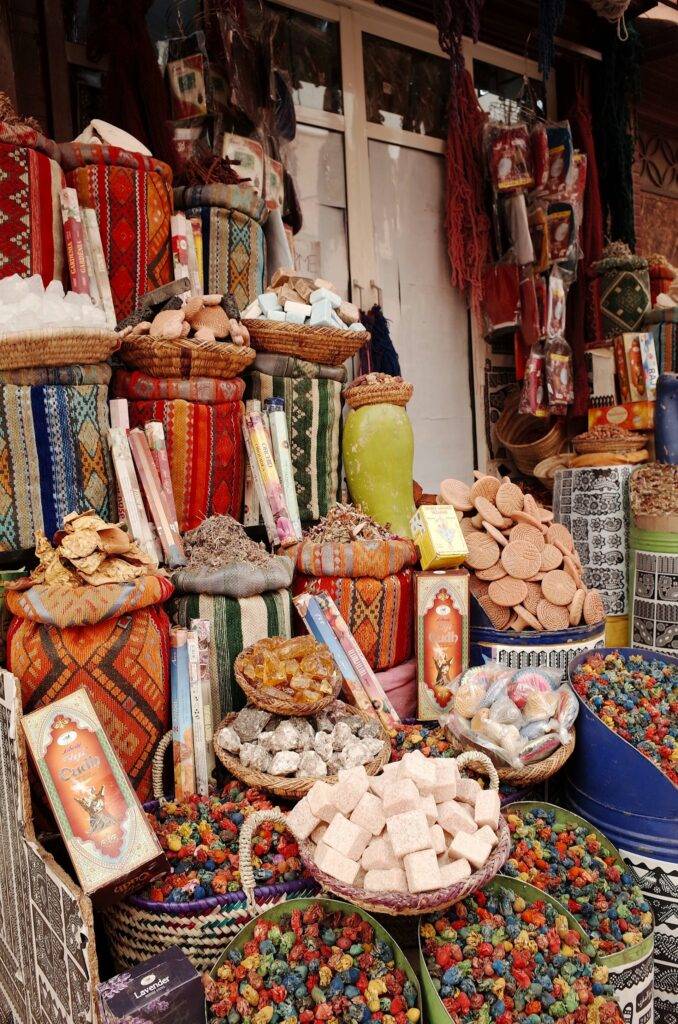
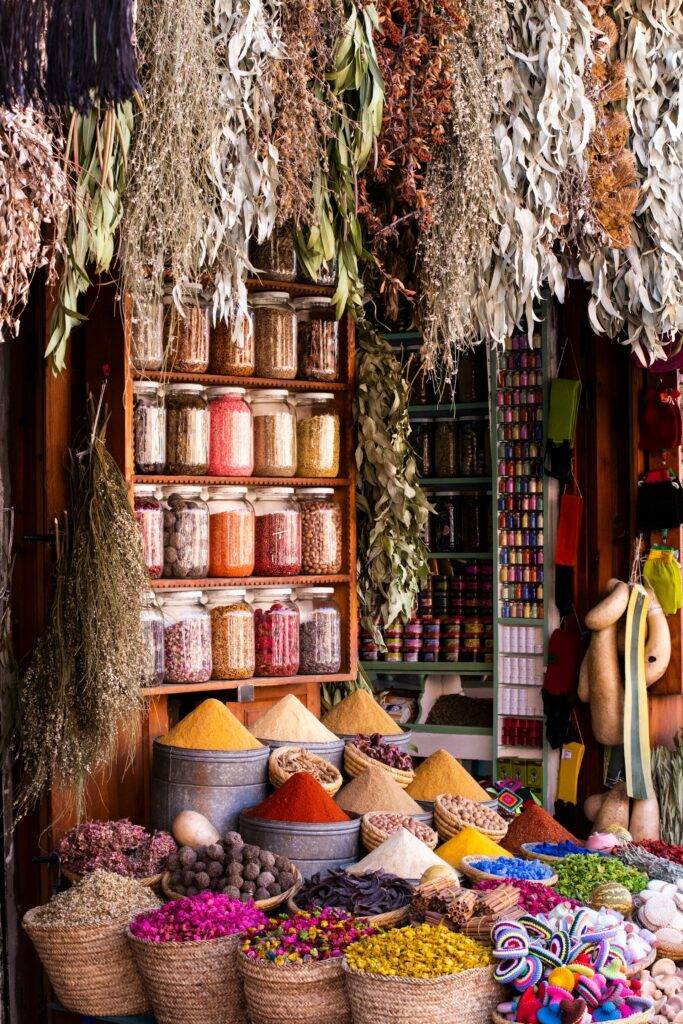
After the museum, I headed back into the medina, this time taking things a bit slower. There’s always something new to discover—even just watching artisans work in their shops is a treat. I grabbed lunch at Café des Épices, a chill rooftop spot in the heart of the souks with a simple but tasty menu. Their kefta sandwich hit the spot.
If you’re still in shopping mode, this is a good window to explore the Ensemble Artisanal, a cooperative of artisan workshops where you can buy quality crafts at fair prices without the pressure to haggle.
Afternoon to Evening: Desert Adventure

At around 3 PM, I got picked up for an excursion to the Agafay Desert—just under an hour outside Marrakesh but completely different in vibe. While it’s a rocky desert (not the rolling sand dunes of Merzouga), the landscape is striking and peaceful.
The experience I booked included a quad bike ride, a camel trek during sunset, and then a relaxed dinner with live music and traditional performances at a desert camp. Watching the sun set over the hills on camelback was easily one of the most memorable moments of my trip. It’s a fun, low-effort way to get a taste of Morocco’s desert magic without the long haul.
I got back to my riad around 10 PM—tired, dusty, and absolutely happy.
Day 3: Day Trip Options from Marrakesh
By day three, I was ready to slow down a little and see what lay beyond the hustle of the medina. Marrakesh makes a great base for day trips—whether you’re craving coastal air, mountain views, or ancient ksars. These are the top options I considered or experienced myself:
Ouzoud Waterfalls
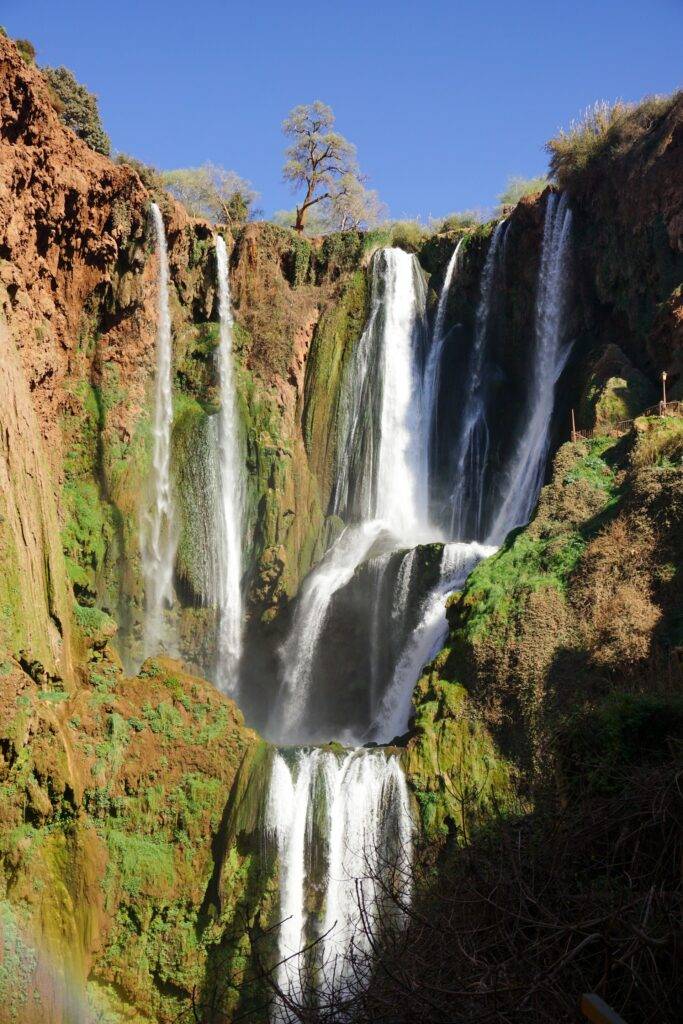
If you’re craving nature and don’t mind a longer drive (2.5–3 hours each way), Ouzoud Waterfalls is an unforgettable day trip. I joined a small group tour that included a walk down to the base of the falls—watch out for macaques!—a short boat ride, and lunch with a panoramic view. It’s a bit touristy but still feels magical, especially if you visit outside of peak season. Bring decent shoes and a swimsuit in warmer months.
Atlas Mountains & Five Valleys Tour
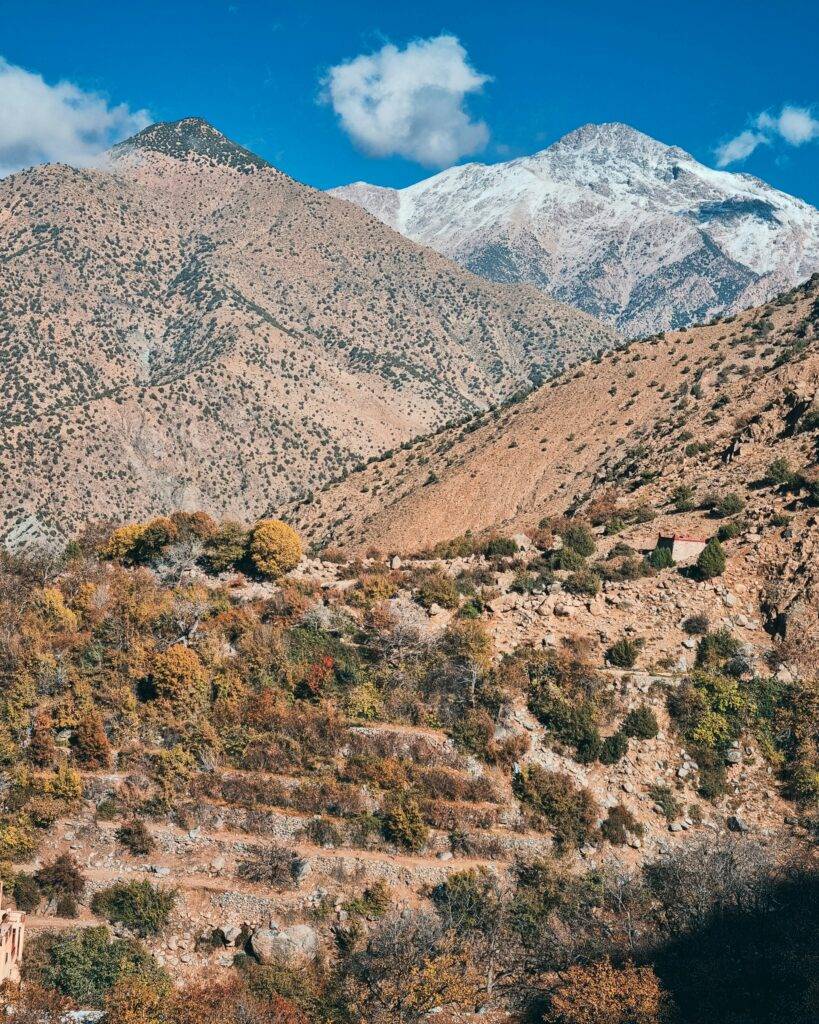
If you want a day of big views, cool mountain air, and a taste of Berber culture, this full-day tour through the High Atlas Mountains was one of the most well-rounded excursions I did from Marrakesh. It’s a great option if you want to experience more than just the typical Ourika Valley stop—without having to drive or plan logistics yourself.
The tour covered five valleys—Ourika, Oukaimeden, Sidi Fares, Asni, and Tahnaout—and included everything: hotel pickup and drop-off, an English-speaking guide, a local hike, and even lunch.
In Ourika Valley, we stopped by a Berber women’s cooperative to see how argan oil is made (yes, I left with a bottle), and then did a short hike to a nearby waterfall with a local guide. Oukaimeden Valley offered jaw-dropping mountain views—bring your camera for this one.
Lunch was one of the highlights: we were welcomed into a traditional Berber home in Sidi Fares Valley for a homemade meal that included mint tea, tagine, and fresh bread, all enjoyed with panoramic views. Afterward, we made quick scenic stops in Asni and Tahnaout Valleys to round out the day before heading back to the city.
It’s a long day, but it never felt rushed, and everything was taken care of—no haggling, no surprise costs, just mountain air and a lot of good food.
Aït Ben Haddou & Ouarzazate
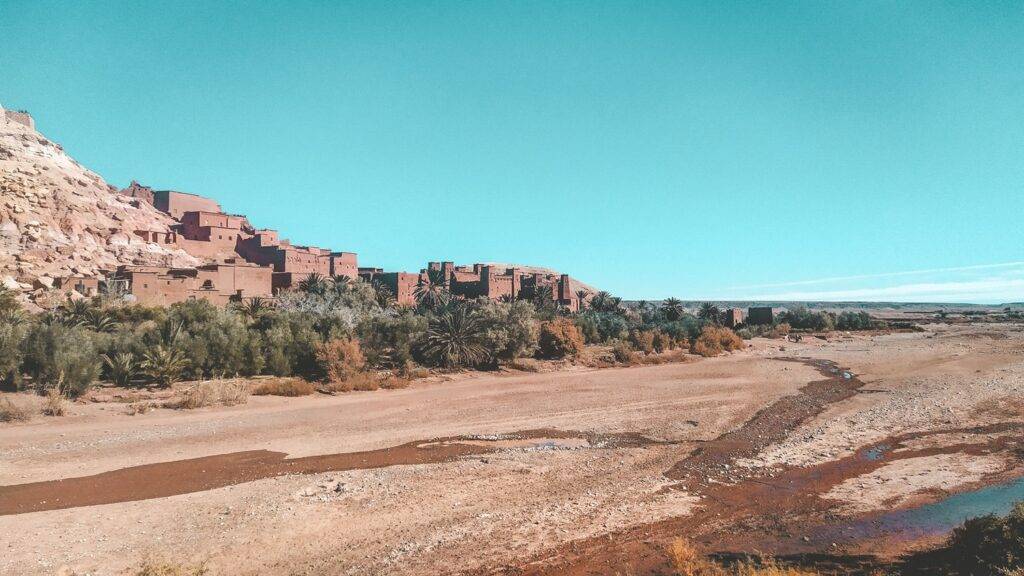
This is a long day (think 12–13 hours total), but if you can handle the early start, a day trip to Aït Ben Haddou and Ouarzazate offers a mix of history, architecture, and movie magic. Aït Ben Haddou is an ancient ksar and UNESCO site made famous by films and shows like Gladiator and Game of Thrones.
I actually based myself in Ouarzazate later in the trip to explore this region more deeply, but many people do it as a full-day trip from Marrakesh. The drive through the Tizi n’Tichka Pass in the High Atlas Mountains is stunning on its own.
Essaouira
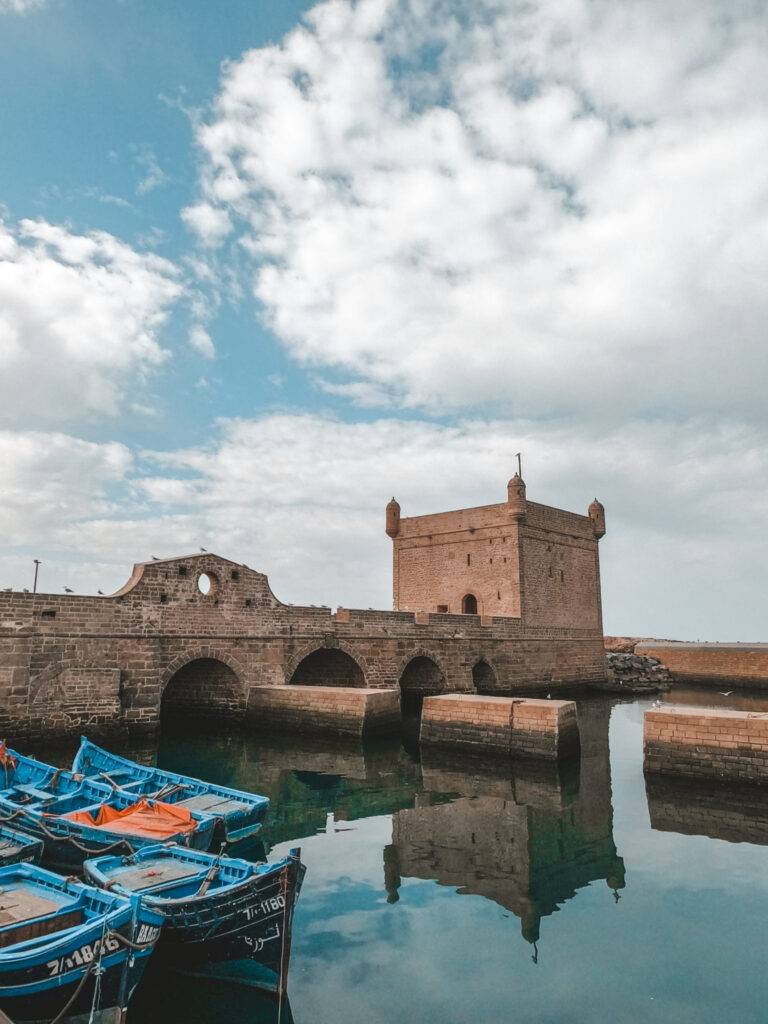
If you prefer ocean breezes to mountain roads, Essaouira is an ideal escape. It’s about 2.5 hours from Marrakesh, and it’s easy to do independently by bus or shared taxi. The relaxed pace, seafront ramparts, and blue-and-white medina are a total contrast to Marrakesh.
I spent a few days there and loved the slower vibe, seafood lunches by the port, and art galleries tucked into the old town. But even if you’re short on time, a day trip is totally doable and worth it—especially for the change in scenery.
Travel Tips & Things to Know
- Dress modestly: While Marrakesh is used to tourists, it’s still a conservative city. Light, breathable clothing that covers shoulders and knees is respectful and will also protect you from the sun.
- Book major experiences in advance: Popular activities like food tours or desert dinners (especially in Agafay) can fill up fast—booking ahead gives you more flexibility with timing and options.
- Stay in a riad: It’s not just about aesthetics—riads offer a peaceful escape from the chaos outside and often include rooftop views, home-cooked breakfasts, and personalized service.
- Cash is king in the medina: Some places do accept cards, but most small shops, cafés, and taxis don’t. ATMs are easy to find, but it’s smart to carry small change for tips and purchases.
- Be ready to haggle: Bargaining is expected in the souks, so take it with a sense of humor. If you’re not interested, a polite but firm “no, thank you” usually works.
- Start early: Marrakesh can get hot and crowded, especially in peak seasons. Hitting the sights early helps beat both the heat and the crowds.
- Google Maps won’t always help in the medina: The alleyways are a maze. Ask your riad for a paper map or use landmarks like the Koutoubia Mosque and main squares to reorient yourself.
Final Thoughts
Three days in Marrakesh goes by fast, but it’s just enough time to get a real feel for the city’s energy—its colors, sounds, spices, and slow sips of mint tea. From wandering the medina’s maze-like alleys and historic palaces to watching the sun set in the Agafay Desert, this itinerary balances cultural highlights with unforgettable moments.
If you have more time, take it slow. Marrakesh rewards lingering. But even a short visit will stay with you long after you’ve left.
Save it on Pinterest for later:
